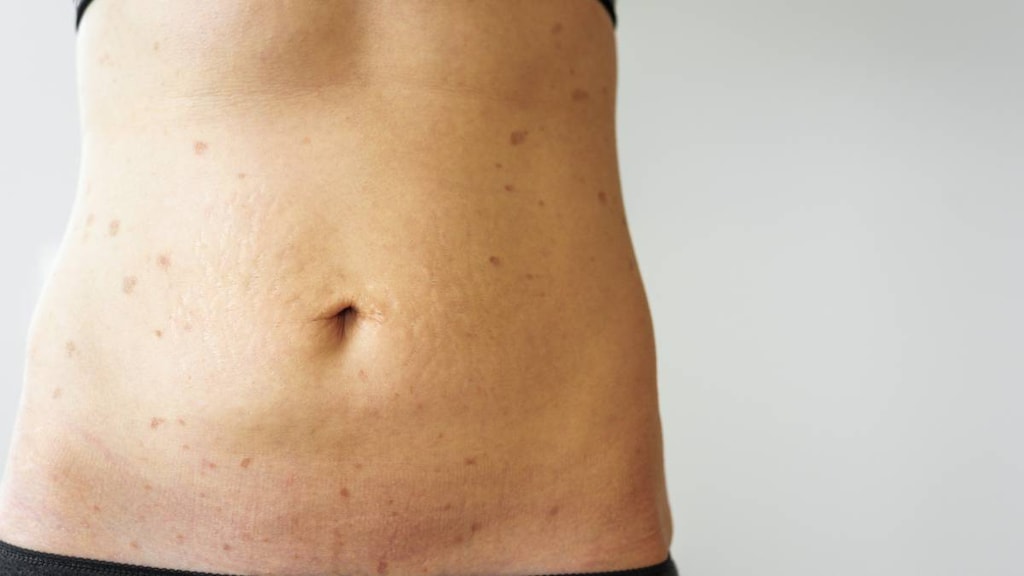
What is lichen planus?
Lichen planus is a common, long-term, inflammatory skin condition that can affect the skin, mucous membranes, or the nails. It affects around 1% of the population, and is more common in women than in men.
What causes lichen planus?
Lichen planus is thought to be an autoimmune disorder where inflammatory cells of the immune system attack an unknown protein within the keratin-producing cells of the skin, nails, or mucous membranes.
People more at risk of developing lichen planus include those:
- With a genetic predisposition to the disease (a family history)
- Experiencing physical or emotional stress
- With a skin injury (such as from surgery)
- With Herpes zoster
- With a systemic viral infection, such as hepatitis C
- With allergies to certain metals
- Taking certain medications, such as gold, quinine, or quinidine.
What are the symptoms of lichen planus?
Symptoms vary depending on what type of lichen planus is present; there are several different types, including:
- Cutaneous lichen planus
- Oral (mucosal) lichen planus
- Vulval and penile lichen planus
- Lichen planopilaris
- Lichen planus of the nails
- Lichen planus pigmentosus
- Lichenoid drug eruption.
Lichen planus isn't contagious.
Cutaneous Lichen Planus (affecting the skin)
Symptoms include:
- An itchy, non-infectious rash consisting of small, many-sided, flat-topped, pink or purple bumps mainly on the arms and legs
- Polygonal plaques (raised shiny, flat-topped red areas of skin with straight sides, some may resemble a triangle, others a hexagon) that mostly affect the front of the wrists, lower back, or ankles, although can appear anywhere
- The plaques may be purplish or reddish in color except on the palms or the soles where they are a yellowish-brown
- Some plaques may appear scaly and be crossed with fine white lines called Wickham striae
- Plaques vary from the size of a pinpoint to larger than one centimeter
- The plaques usually resolve within a few months leaving areas of skin discoloration that may take a year or longer to fade.
Oral Lichen Planus
May involve the inside of the cheeks and the sides of the tongue as well as the gums and lips. Symptoms may include:
- Painless, white streaks in a lacy or fern-like pattern on the tongue, lips, or inside of the mouth
- Painful erosions or ulcers on the mucous membranes
- Redness and peeling of the gums
- Inflammation of the gums adjacent to amalgam fillings.
Vulval and Penile Lichen Planus
- Vulval lichen planus may affect the labia majora, labia minora, or entrance to the vagina. Symptoms may include:
- Painless, white streaks in a lacy or fern-like pattern on the genital area
- Painful erosions or ulcers
- Scarring, resulting in adhesions
- Desquamative vaginitis, which is painful with a mucky vaginal discharge and may bleed on contact, preventing intercourse.
Penile lichen planus usually presents with papules in a ring around the glans penis. Less commonly, white streaks and erosions may occur.
Lichen Planopilaris
This usually presents as tiny, red, spiny, papules that affect the hair follicles of the scalp, and less often, elsewhere on the body. Permanent bald patches mya result with sparse, lonely hairs.
Nail Lichen Planus
Usually affects one or more nails. It thins the nail plate, which may become grooved and ridged. Nails may darken, thicken, and lift off the nail bed.
Lichen Planus Pigmentosus
Grayish brown marks appear on the face, neck, or trunk, usually in sun-exposed areas although sometimes they can arise in the armpits.
Lichenoid Drug Eruption
Some medications (such as captopril, gold, hydroxychloroquine) may provoke a flat pink, brown or purple, slightly scaly patch to arise on the trunk, or sometimes inside the mouth.
How is lichen planus treated?
Treatment may not always be necessary depending on the severity of the condition and where it is located. Most people can manage typical, mild cases of lichen planus at home, without medical care. Treatments may include:
- Topical steroids
- Topical calcineurin inhibitors, such as tacrolimus or pimecrolimus
- Topical retinoids
- Intralesional steroid injections
- Oral corticosteroids
- Other medications, such as acitretin, azathioprine, or methotrexate
- Phototherapy.




